
Mark Tullius is an Ivy League grad who worked in a warehouse, an MMA fighter, a bouncer and bodyguard. His novel, Brightside, is a sci fi thriller. He is currently interviewing MMA fighters for a nonfiction study.
Mark met me at The Slaughterhouse where we talked about danger and philosophy.
How does MMA mix martial arts and to what effect?
Mixed Martial Arts (MMA) has changed considerably since its inception. I got into the sport fifteen years ago when it was called No Holds Barred(NHB.) Back then it was much more of one style versus another. Kickboxer versus wrestler, karate versus jiu-jitsu. That was one of the reasons I was drawn to it.
After I graduated from Brown, I did a lot of bouncing and became a bodyguard where I was introduced to grappling. Because I was a fairly big and strong guy, I found that with a little bit of knowledge I could overcome others who had been training traditional martial arts for years. My instructor, who had black belts in three different disciplines, couldn’t do much when we were on the ground and only legal strikes were allowed. Size and strength got me through a lot back then, but that was all I had besides a tiny bit of kickboxing experience and years of hitting a heavy bag.
I was foolish and after only three months of NHB training, I jumped into a cage without telling my instructor because I knew he’d tell me not to. I didn’t take the time to learn techniques and only focused on securing a favorable position and not getting tapped. As time went on, I began to implement a little more of each art, but again, I was in survival mode, mainly learning enough to protect myself instead of trying to become proficient. My thinking was that I knew so little of the other arts that I should just spend time sharpening the few tools I had. It wasn’t until my fight with Travis Wiuff, a very good wrestler who picked me up and slammed me several times in our fifteen minute battle, that I realized I’d better start learning how to defend that. Not exactly the smartest way to go about training.
Today isn’t like that at all. Everyone trains everything. I’ve been to over sixty gyms across this country in the past six months, and the amount of knowledge these fighters possess always amazes me. Even the young kids know ten times the number of moves I did when I was fighting. This is something most people don’t understand. There are tons of guys out there who think they’re tough and could hang with a MMA fighter if they had to. They can’t. I’d like to think I might be able to handle myself against the average guy on the street, but I understand that the new breed of MMA fighters are something entirely different. Whether it’s takedowns or tosses, armbars or leg locks, I get tapped out by guys who are barely trying, regardless of their size. These men and women are incredible athletes with such an arsenal, only another well-rounded fighter can stand against them.
That’s one of the things that I love about my Unlocking the Cage project. For the first time in my life, I want to learn techniques and master them. I finally appreciate MMA as a true martial art and look forward to introducing new people to it.
You’re currently interviewing MMA fighters for a non-fiction study. What are you learning about the sociological aspects of the sport?
Although the sociological survey is still being designed and won’t be distributed for several months, I’m learning a lot through the interviews. I’ve been incredibly fortunate and been able to talk with fighters and coaches across the country. If I’d limited this study to the top fighters at the biggest schools, I’d only be seeing such a small slice of the sport. I want to take as large of a picture as possible and truly understand who MMA fighters are and why they choose to fight.
In a perfect world, I would spend a few days training and hanging out with each fighter prior to their interview, but that usually isn’t the case. My quest to hit as many quality MMA gyms as possible in such a short amount of time comes with quite a few limitations. In the two hundred interviews I’ve done since May, I’d say close to half were started with minimal introductions, a quick handshake and rundown on what I’m looking for. Usually the interviews are done after our training sessions and there might be several fighters waiting for their turn to talk. This leaves me with very little time to find out what the person is all about. I have had some pretty incredible interviews that have lasted for hours, but on average I’d say I’m trying to figure out how these people tick in under twenty minutes.
Having fought before has removed a barrier that other interviewers might encounter. Although I wasn’t a good fighter, I know what it takes to get into the cage. I know what it feels like to lose, to win, to get teeth knocked sideways, elbows popped, nose smashed, double vision, have to cut weight, etc. I’ve asked myself the same questions I’m asking these guys. I want to understand who they are and they want to tell me, help break the stereotype of what fighters are all about.
I believe the key to quickly discovering who someone is, is by following their journey. Every interview starts the same, where were you born and raised. It seems simple enough and often times it is, but so many great discussions have developed from this. What was their childhood like? Did they move all over? That had to be hard, probably made playing sports and making friends difficult. Were they from a military family or in a broken home? Did they have brothers and sisters, what’d their parents teach them about fighting?
A person’s background doesn’t dictate who they will become, but it can help explain their motivations and desires. Certain gyms are full of guys who grew up in white-collar families watching WWE, while the gym in the bad part of town is home to former drug dealers, gangbangers, and thugs who grew up in a much different environment. An astonishing number of fighters found MMA after wrestling in high school and college. Other fighters have never played any sports, and a large percentage, like myself, only played on teams.
Everyone has reasons for fighting, although many may not be aware of them, especially the ones that are currently fighting. It’s hard to say why you’re doing it when it’s just what you do. I was asked that question all the time, why the hell am I fighting? I’m still figuring out that answer and it’s been eight years since I stepped in the cage.
Whether these men and women are fighting for fame, running from pain, or finally found something they were good at, I’d say 95% of them have something in common. They’re incredibly good people that I’d gladly call my friends. Early on in this journey, I wrote that the world would be a better place if it were full of fighters. I believe that now more than ever. For those of you who don’t believe me, watch some of the interviews, take a look at who these people really are. I think you’ll be impressed.
How addictive is the confrontation with danger?
The confrontation with danger can be addictive, but it is very hard to quantify it without the survey. Some fighters shy away from that term and deny danger’s pull. They say the fight is just business and danger is for the other guys they’re about to defeat. Many have said it’s like a religious experience where time slows down because they’re completely present. Others speak freely of the fear, what it’s like to conquer it and how that’s changed their life.
It’s difficult to tell from the interviews how much weight should be given to each factor that motivates these men and women to get in the cage. Is it the fame and glory, the satisfaction of finally making a mark on the world? The feeling of accomplishment, making your opponent submit? A cathartic release for all the pain they’ve been through? The fight or flight adrenaline dump?
I’m not sure how much the danger plays a part, but I believe it is less than most people think, especially for the experienced fighters. This is what they do, it’s their job. Usually the hardest part of a fight is the training camp and by the time they get into the cage, they’re ready to get to work and have some fun. Although deep down they may be afraid to lose in front of friends and family, or worry about a career-ending injury, I don’t think it’s the addiction to danger that keeps bringing them back. They are there for many reasons and although the thrill of putting themselves in peril may have started them on the path, once they are on it, it’s just part of who they are.
There is much in the martial arts about being in the present. Do you have a fighting philosophy?
One of the great things about the martial arts is that it forces you to be present. Thinking about the past or worrying about the future only clouds the mind and slows down reactions. The martial artist’s focus must be on the now. Being tuned in to the opponent’s movements and sounds can make all the difference in a fight, and the slightest distraction could result in an injury.
Although I spent close to ten years of my life learning to fight, I never understood the importance of being present and didn’t develop an effective fighting philosophy. One of my greatest obstacles was the time leading up to the fight. Had I been able to stay in the present, I wouldn’t have experienced pre-fight jitters, worrying about what could go wrong, sabotaging myself before I even entered the cage. My mind wouldn’t have wandered to previous sparring sessions or fights that’d left a negative impression on me. Being in the present doesn’t allow for this and makes the individual much more calm and at peace, a great place to be when preparing for battle.
It wasn’t until recently that I learned the importance of being in the present and how powerful it can be in all aspects of life. The Power of Now, by Eckhart Tolle, helped me understand how to stay present throughout the day and has significantly changed my life and made me a much happier man. If we don’t allow ourselves to spend time worrying about the past or future, so many of our fears, self-doubt, and pain will wash away. It’s a very simple message that’s been told countless times throughout history, but Tolle does a great job of applying it to today’s culture. This is one book that I highly recommend to my friends.
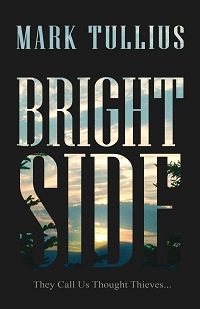
Tell us about Brightside.
Brightside is a sci-fi thriller about Joe, a young man who has spent his entire life hearing the thoughts of those around him. He tries to keep it a secret from everyone, but someone reports him to the government. Agents rip Joe from his house and send him to the beautiful mountain town of Brightside. Despite everyone trying to make Brightside seem like a great place to live, Joe isn’t able to get past it being a prison he can’t ever leave. He’s always hated himself for hearing others’ thoughts, but now it’s so much worse having his thoughts exposed. The novel starts on Joe’s hundredth day in the town, the day it’s all going to end. One way or another, he’s getting out of Brightside.
What do you make of the E Book revolution?
A year ago, I couldn’t care less about eBooks. Then my wife got a Kindle and began downloading one or two novels a week, a big surprise since she’d said she was like me and would only read print. I didn’t complain though because our house was already full of books and I’m not into the majority of the sci-fi and fantasy she flies through.
It was around this same time that I was trying to decide the best course of action for Brightside. Was I ready to go through another demoralizing hundred rejection round of begging literary agents to take a look at it? Did I even need a big publishing house and I was I prepared to wait that long? I’d read the success stories of authors like John Locke, Amanda Hocking, and J.A. Konrath. I also had a lot of faith in Brightside and believed that eventually it would take off. Maybe not immediately, but I figured by the time Unlocking the Cage would be released, Brightside and my other novels would do just fine.
The thing that really sold me on eBooks was how quickly I could get my writing in front of others. In the last two months, thanks to Amazon’s Kindle Direct Program, Brightside has been downloaded over 17,000 times. Out of the 16,700 that were downloaded for free, there’s no telling how many will actually be read, but I believe the 700 that have been purchased or borrowed in the last month, most likely will.
I’m sure there are a lot of authors out there who have only negative things to say about the free program, but it was right for me. My goal as a writer is to get my words in front of as many people as possible, to find those individuals who respond to my writing. With next to nothing for an advertising budget, I did what other debut authors would have a hard time doing if they just stuck with print and didn’t have a huge house backing them.
Another thing I love about eBooks is the ease and effectiveness in which an author can monitor and manipulate labels and prices. Although the telepathy aspect of Brightside does make it speculative fiction, I hadn’t considered it science fiction and hadn’t labelled it as such for the first KDP promo days. The second time around I did and was pleasantly surprised to see it as the #1 free sci-fi book for all three days while struggling to reach #2 in the thrillers. Now I know my audience, I can better market to it.
Other benefits of eBooks include being able to update work at any time, not having to worry about selling a certain amount less it be taken off the shelves, they can contain extra content and links, and are relatively inexpensive for fans. EBooks aren’t going anywhere for quite some time and I plan on taking full advantage of this format.
Is there a particular event that has changed your life and influenced your writing?
There was an event that changed my life, but I didn’t realize it until I went through the writing workshop at the Esalen Institute that transformed my writing.
In March of 2009, I attended Tom Spanbauer’s Dangerous Writing workshop after it was recommended by my instructor at the UCLA Extension Writers’ Program. I hadn’t heard of Tom, but was excited about the opportunity when I learned he had been a writing mentor of Chuck Palahniuk, one of my favorite authors.
I was close to finishing my first draft of Brightside when I left for this trip, and wasn’t sure what to expect. Tom had given us a short assignment, a simple two-page paper asking us
to write about an event that changed us. There were quite a few possibilities, but I went with the most hurtful and wrote about an incredible friend who’d taken his life.
It was difficult trying to read the assignment in front of strangers, but the rewrite was one of the most painful experiences I’ve ever been through. Tom taught us to return to that sore place we don’t want to go, pull off the scab and let the emotions out. I spent an entire night reworking that assignment, the ocean crashing below while I sat in my room, tears staining six heart-broken pages.
My friend had been dead for over a dozen years, but the guilt and regret, the pain and the sorrow, had been buried. By digging open that wound and giving voice to his ghost, I was able to move on, a true catharsis.
It was during the workshop that I finally understood why I was writing Brightside. In the novel, the main character struggles with thoughts of taking his life and the guilt of not stopping a loved one. Suicide is rampant in the town of Brightside, but until that workshop I hadn’t understood why. It seems foolish looking back, but I’d done one hell of a job of repressing it.
Besides transforming the way I look at writing, that workshop and subsequent video-chats with Tom convinced me to completely rewrite Brightside, switching it from third person to first. This added another two years to the novel, but I will be forever grateful that I made this change. I still have much to learn about Dangerous Writing, and wish I lived in Oregon so I could join that talented crew, but I feel as if they’ve put me on the right path and given me the confidence that I can figure it out on my own.
This is the dedication in Brightside:
For Jen and Olivia, who make the bright side so easy to see.
And to my dearly missed friend who wasn’t able to.
What are you working on now?
Not losing my mind. With another child on the way, I’m working like never before, trying to fit in workouts at MMA gyms, conduct interviews, and keep active on my blog. On top of all that, there is my fiction, the true passion I can’t neglect.
I’m currently putting the final touches on 25 Perfect Days, a mosaic novel that consists of twenty-five interlinked stories, each written from a different character’s point of view. These stories chronicle the slide into a hellish future of food shortages, contaminated water, sweeping incarceration, an ultra-radical religion, and the extreme measures taken to reduce the population.
In December, I’m jumping back into Ain’t No Messiah, the first book in a five-novel series. I learned a lot about myself and my thoughts on religion as I wrote about this young man who was told from birth that he was the second coming of Christ. The first draft is finished and with a little luck, I’ll get this out next year.
The other project I’m very excited about is a YA Choose Your Own Adventure style horror novel. I was a huge fan of the CYOA books as a child and I think both teenagers and adults will enjoy both the novel and app. Depending on how well it does, and my limited time, we are considering making a series out of this.
It’s nice not having to worry about writer’s block and being able to come up with ideas, but my to-do list can be a bit overwhelming. It’s teaching me to take things one day at a time, not worry about self-imposed deadlines, or to be constrained by genres or labels. I’m
incredibly fortunate to be able to do what I love and I’ll continue down this path until that changes.
Graham Greene said writers have a splinter of ice in their hearts. What do you make of his observation?
Writers need to have some coldness in order to succeed. Without the ability to withstand criticism, we could never release our work. Whether it’s a blog, article, short story or novel, there is no possible way to please everyone. Some people may find you a genius, others a moron. This coldness is what protects us, gives us the courage to share ourselves with the world.
I also think it can be applied to the hurt each of us harbors. We’ve all experienced pain and loss on some level, a part of our heart hardening as a result. Writing can chip away at this, help melt the hurt, and free not only our hearts, but the hearts of the readers who respond to our words.
What was the most important decision you made this year?
Like many writers, I’m a pretty private person and definitely an introvert. I have a close group of friends, but am not much of a socializer, especially if I’m sober. The thought of meeting new people has always been intimidating, and doing it under the guise of an author and former fighter, only made it worse. It would have been easy to remain a stay-at-home dad and play around with my fiction, but I made a commitment to myself earlier this year and forced myself out of my comfort zone, the best thing I’ve ever done.
I’ve grown quite a bit by putting myself in situations I felt incredibly ill-equipped to handle. Prior to May, I had never interviewed a single person, I had no experience with a camera, and I was in piss poor shape with limited MMA knowledge. A lot has changed in six months, my confidence higher than ever thanks to all the wonderful people I’ve come across. Everywhere I go, I’m learning new things, being inspired, making new friends. My view on MMA has changed drastically and I truly believe Unlocking the Cage can make a difference. I hadn’t considered UTC would produce anything positive, but I have countless hours of men and women talking about what it means to be a parent, how they treat everyone with respect, what life lessons they’ve learned along their journeys, and ways in which they’ve overcome adversity. With MMA so popular and fighters being idolized, I think these interview videos can help shape some new opinions.
By putting myself out there, I’ve also somehow inspired a few others to follow their passion. They realize I’m just an everyday guy like themselves who got tired of letting life go by, and they understand that the only thing stopping them from pursuing their dreams is their own self-doubt. It’s been great to see these obstacles removed and I’m excited that I’ll be working with some of these people on future projects.
The other very cool result of my new attitude is the effect it has had on my four-year-old daughter. Besides seeing how proud she gets when she hears people discuss Brightside, we’ve been able to talk about the similarity between some of our fears. I recently took her to a gym to watch me train and interview fighters. Before we went inside, I reminded her of how I get nervous before I meet new people, just like she does at school. But I told her to watch what happens if I smile and introduce myself and really listen when I’m doing the interviews. It’s amazing what you can learn about someone when you’re not thinking of yourself and how to respond.
When we got home, we talked a bit about the day, how even though I didn’t spend a lot of time with the fighters I interviewed, I would call them friends. She also got to see how I kept on trying in the workout no matter how tired I got or how many times I was beat. It’s okay not to be perfect, it’s fun to learn, and great to exercise. No one was trying to hurt each other, and everyone left the mat better than when they’d stepped on it.
So I would definitely say the best decision I made this year was to no longer listen to that tiny voice that told me I couldn’t do what I wanted. The decision to go for it, to not worry what others might think and enjoy the challenge.
Unless my wife is reading this. Then my answer changes to the decision to have another child. Can’t wait to get even less sleep and back into diaper changing at 40. Should be fun.
Mark thank you for an insightful and thoughtful interview.


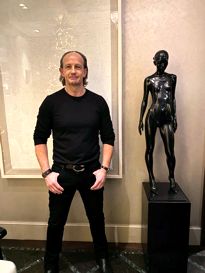
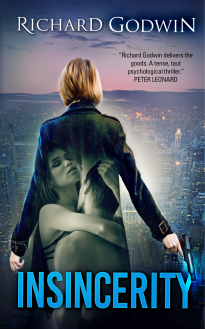
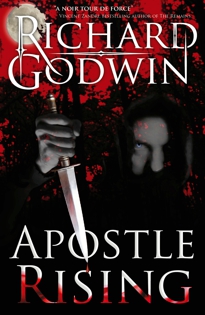
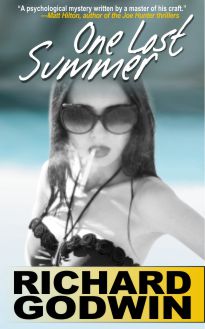
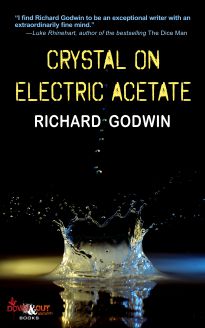
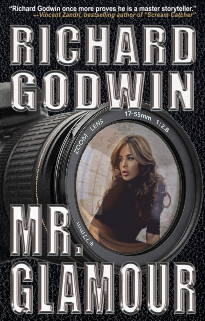
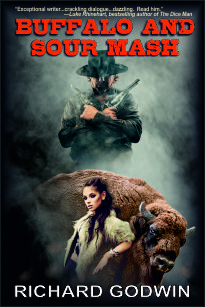
5 Responses to Chin Wag At The Slaughterhouse: Interview With Mark Tullius